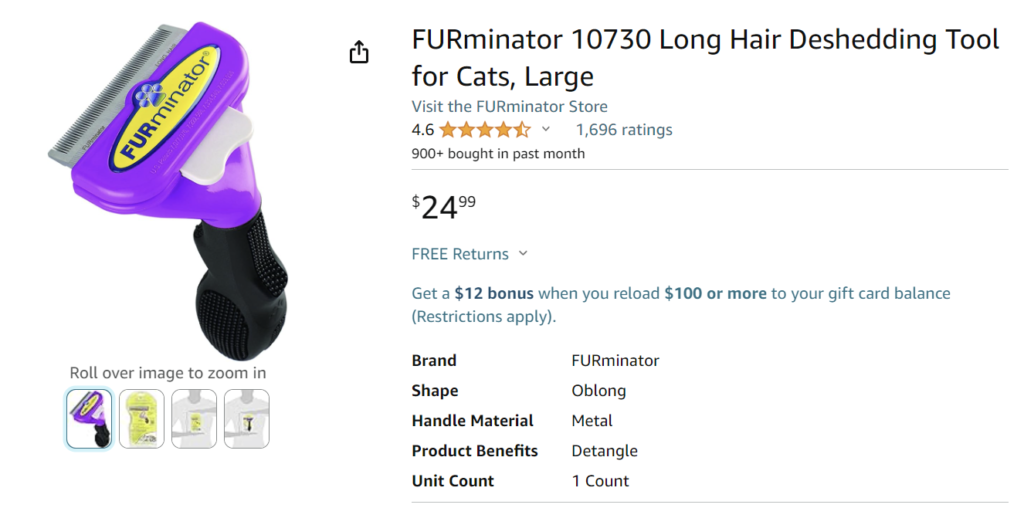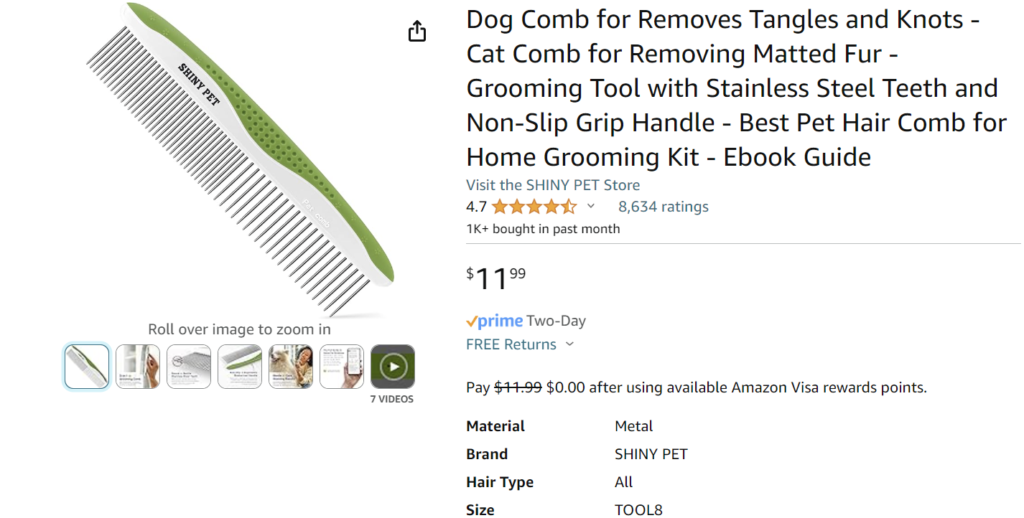
When kitties move into their “golden years” they need special consideration for their well-being. Here are five important steps to keep your senior cat healthy and comfortable.
1) Brushing
I have been blessed with many kitties in my life, and while some sadly died young most lived to be quite old. My oldest yet was Mandy who lived to be 20! At some point she just stopped grooming herself. Whether due to arthritic stiffness, dental problems (see #2), or just a lack of awareness, this presented a more significant problem than one might imagine.
Cats groom themselves multiple times a day with their little slicker brush-like tongue. This keeps their fur untangled and the underlying skin clean. If they go outside, they will also sometimes bathe in dirt like chickens, rolling around then shaking off. All of this grooming causes us to not notice how much work goes into keeping a cat clean … until they stop doing it.
When Mandy stopped grooming, her short fur became matted and her skin greasy! I didn’t know short fur could tangle like that. I experimented with different brushes and settled on the Furminator for general dead fur removal and a basic comb for mat removal.
NEVER remove mats with a scissors! Cat skin is very thin and stretchy and it is easy to cause serious injury. If you cat is heavily matted, consult your veterinarian. They can safely shave off the mats and instruct you on preventing them from coming back.
A slicker is good for a final brushing after mats are untangled. Note that the brush linked here does not have ball tips on the wires. I learned the hard way not to buy that kind, as the balls get stuck on the fur and yank it out. While the slicker is a good finishing brush, it is not adequate as a stand-alone. It will only brush the top of the fur and not untangle any mats underneath.
When you notice your kitty not grooming as well as s/he used to, first check with your veterinarian to see if there is a medical problem, then start a daily brushing routine.
2) Dental care
My Mr. Cutie, who is 13, doesn’t look or act “old” so although I saw some tartar I didn’t notice his teeth deteriorating. When I took him in for an exam and dental he ended up needing an extensive procedure. When you have a lot of cats like I do, it’s easy to let things go. Scheduling a yearly checkup or keeping a speadsheet of cat ages and care could have prevented this. Fortunately he recovered well and still shows no signs of being old!
As cats age, so do their teeth. They can develop tartar and cavities like people, plus other strange ailments specific to cats. For example, they can at some point start reabsorbing their own teeth! This can leave partial teeth or roots to get infected. Left unchecked, these infections can open holes in the gums and even cause fistulas between the mouth and sinus area.
Signs of dental issues include not grooming, not eating, and drooling. However, some cats are stoic and will not show symptoms, so be sure to take them in for regular veterinary exams.
Contrary to popular belief, pet kibble does not clean teeth. Cats (and dogs) don’t actually chew like we do. Their molars act like scissors to cut food into pieces small enough to swallow. Most kibble does not even need to be broken; in fact, I have had more than one cat with no teeth at all continue to eat kibble. A good quality canned food is generally thought to be more nutritious than kibble for cats, plus it contains a lot of moisture. Choose the food that works for you, but don’t be fooled into thinking that kibble will clean teeth.
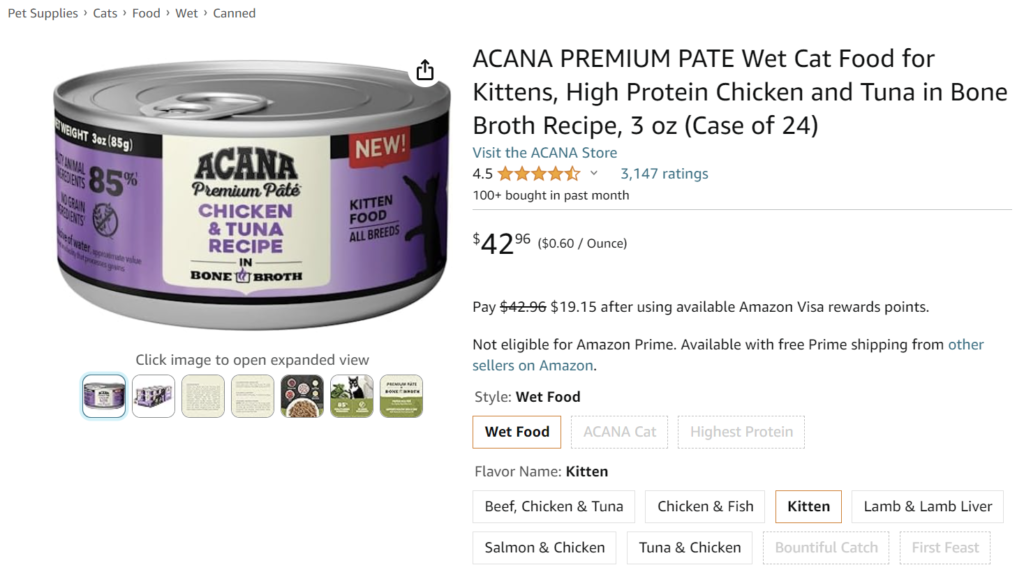
Some people brush their cat’s teeth to prevent dental disease. An advantage of this practice is that you will see the condition of your kitty’s mouth every time you brush. As with any medical issue, early treatment is best for good health and for your pocketbook. Mr. Cutie’s procedure cost something like $1100!
There are many products available for feline dental health available for purchase online or from your veterinarian.
3) Nail Trimming
As kitties age, they tend to be less active. One result of this lack of activity is longer nails. While most cats need their nails trimmed regularly, it is more critical for seniors.

If you have cats you have likely seen their nail sheaths discarded around the house or garden. When they stretch and scratch on a tree, a mat, or furniture, the dead outer layer of their claws sloughs off like a snake’s old layer of skin. Sometimes senior cats are so sedentary or arthritic that they no longer do this and their claws have a thick buildup of old material. When you trim the nail, you will need to pick off these old layers with your finger.
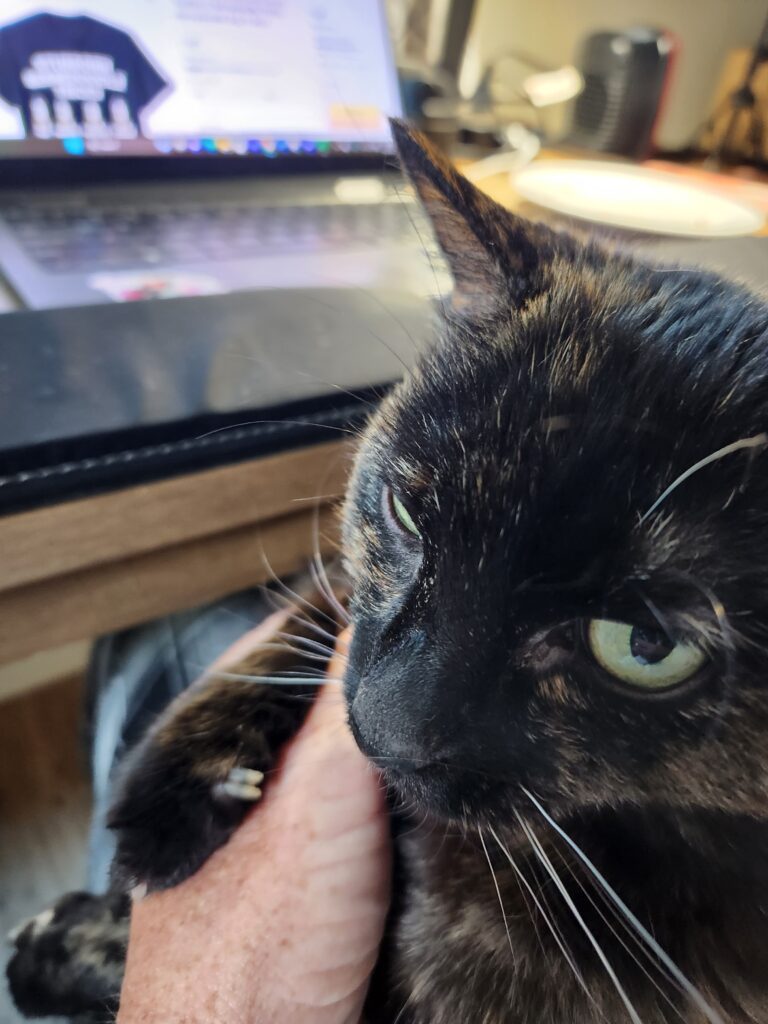
Left untrimmed, nails can curl around and puncture the pad, especially the dewclaw. I have seen this happen in some of my clients’ cats, especially those who are semi-feral and hard to handle. By the time they get their nails trimmed, they are way overgrown.
My Miss Kitty has malformed legs and paws so I need to keep a close eye on her. One of her digits is two toes and nails fused together which curl tightly, so I need to check it frequently. She hates nail trims so I keep a trimmer on my desk. When she sits in my lap I can grab it and do a stealth trim before she knows what’s happening!
I prefer the scissor-type trimmers. They can be found at any pet store or online for less than $20. I do not favor the “guillotine” type as they crush the nail. See my video on proper cat nail trimming below. If you’re at all uncertain, take your kitty to the vet or have a pet sitter or vet tech who does house calls come out and so it for you.
4) Bedding
If you are in your senior years, you will understand the need for comfort. I remember long afternoons at the library sitting cross-legged on the hard tile floor reading books about kids’ adventures with dogs and horses. If I sat like that today I would not be able to get up! Cats, too, need considerations for their comfort.
One of the things that changes in some older cats is the ability to jump. My eldest, Elf, is 15 and still jumps quite well. She can go wherever she wants in the house. However, some cats will become too stiff to the point where they can’t jump or they can but it might be painful.
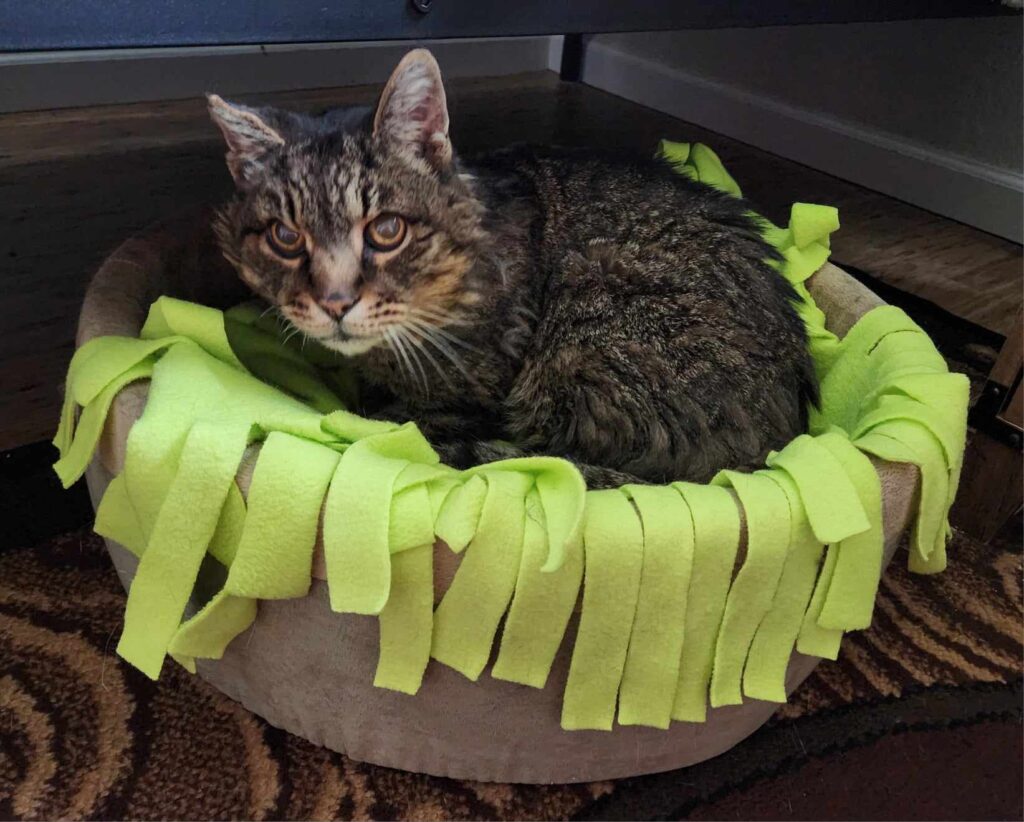
Nikki was a very old cat that I pet sat for years. The last time I cared for him, the owner asked if he could stay with me during a long trip. I said yes and I’m glad I did because he passed away not long after. Nikki’s owner brought his favorite heated bed and I put it on the floor of my office so we could spend time together. Nikki walked like a toy soldier and really couldn’t jump, so I made sure his bed and litter box were easily accessible.
Old Mandy, mentioned in #1, lived the last few years of her life on a table in my living room. She could walk around the house but it was difficult to get up and down and the younger cats harassed her, so she was happier with her own territory. I put a litter box, bedding, and food in her area and she was content.
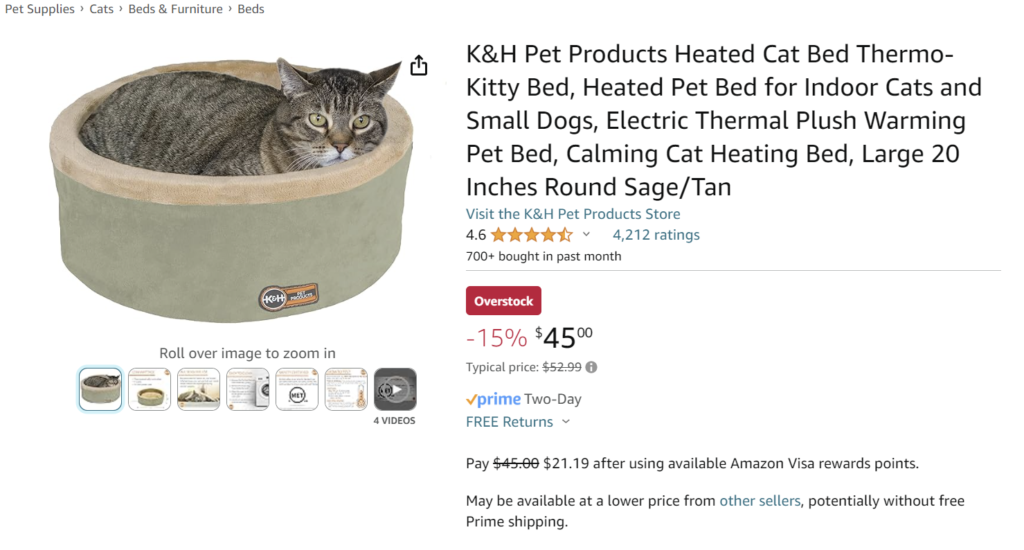
The heated cuddle beds are a favorite of all my cats, not just the elders, so I highly recommend them. As you can see in the picture of Nikki I cover them with another blanket to keep them clean. They can be washed but it’s a pain taking them apart and putting them back together.
5) Safety
Accepting the fact that your cat (or dog) is declining in their senses can be difficult, but it’s an important step in keeping them safe. In my years in animal sheltering I saw many cases of cats and dogs who wandered away from home and were unable to return due to mental or physical difficulties.
I recall one case of an Australian Shepherd who had always had free roam of his country property and never wandered, but as he aged he started getting lost. During one of these times he got stuck in a ditch and ended up at the shelter receiving veterinary care. We advised the owner to keep him confined but I’m not sure he heard the message.
Another time an old black cat was found near death under some bushes and brought to the shelter for care. He was experiencing kidney failure and was too weak to walk. The veterinarian was able to save him and the grateful owner picked him up. We advised her to keep him indoors from now on and she agreed.
A common and harmful mythical belief is that “animals go away to die.” Animals do not have a concept of death like we do as humans. When they feel ill, weak, or confused, they will “go away” and hide or simply collapse, unable to return home. The danger in this belief is that when an animal disappears, the owner may not look for them. As in the cases of the Aussie stuck in a ditch or the black cat dying of kidney failure in the bushes, what is really happening is that the animals are suffering and need care.
Because of these possibilities, I recommend keeping elderly cats closer to home. Unless you have a fully enclosed garden or catio, elderly cats should stay safely indoors. My Elf loves to go outside so I do let her in the yard for a short time under supervision. I live on a busy street so I don’t allow any of my cats off the property.
I hope these five tips help you provide the best life for your senior kitties.


